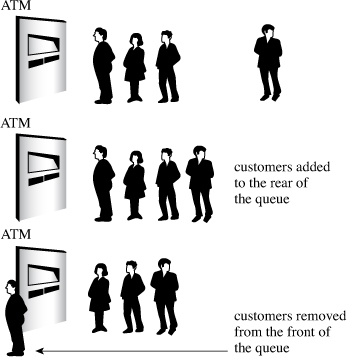Classes Whose Constructors Use new
You need to take several precautions when designing classes that use the new operator to allocate memory pointed to by a class member (yes, we summarized these precautions recently, but the rules are very important to remember, particularly because the compiler does not know them and thus won’t catch your mistakes):
• Any class member that points to memory allocated by new should have the delete operator applied to it in the class destructor. This frees the allocated memory.
• If a destructor frees memory by applying delete to a pointer that is a class member, every constructor for that class should initialize that pointer, either by using new or by setting the pointer to the null pointer.
• Constructors should settle on using either new [] or new, but not a mixture of both. The destructor should use delete [] if the constructors use new [], and it should use delete if the constructors use new.
• You should define a copy constructor that allocates new memory rather than copying a pointer to existing memory. This enables a program to initialize one class object to another. The constructor should normally have the following prototype:
className(const className &)
• You should define a class member function that overloads the assignment operator and that has a function definition with the following prototype (where c_pointer is a member of the c_name class and has the type pointer-to-type_name). The following example assumes that the constructors initialize the variable c_pointer by using new []:
c_name & c_name::operator=(const c_name & cn)
{
if (this == & cn)
return *this; // done if self-assignment
delete [] c_pointer;
// set size number of type_name units to be copied
c_pointer = new type_name[size];
// then copy data pointed to by cn.c_pointer to
// location pointed to by c_pointer
...
return *this;
}
A Queue Simulation
Let’s apply your improved understanding of classes to a programming problem. The Bank of Heather wants to open an automatic teller machine (ATM) in the Food Heap supermarket. The Food Heap management is concerned about lines at the ATM interfering with traffic flow in the market and may want to impose a limit on the number of people allowed to line up at the ATM. The Bank of Heather people want estimates of how long customers will have to wait in line. Your task is to prepare a program that simulates the situation so that management can see what the effect of the ATM might be.
A rather natural way of representing the problem is to use a queue of customers. A queue is an abstract data type (ADT) that holds an ordered sequence of items. New items are added to the rear of the queue, and items can be removed from the front. A queue is a bit like a stack, except that a stack has additions and removals at the same end. This makes a stack a LIFO (last in, first out) structure, whereas the queue is a FIFO (first in, first out) structure. Conceptually, a queue is like a line at a checkout stand or an ATM, so it’s ideally suited to the task. So one part of the project is to define a Queue class. (In Chapter 16, you’ll read about the Standard Template Library queue class, but you’ll learn more by developing your own than by just reading about such a class.)
The items in the queue will be customers. A Bank of Heather representative tells you that, on average, a third of the customers will take one minute to be processed, a third will take two minutes, and a third will take three minutes. Furthermore, customers arrive at random intervals, but the average number of customers per hour is fairly constant. Two more parts of your project will be to design a class representing customers and to put together a program that simulates the interactions between customers and the queue (see Figure 12.7).

